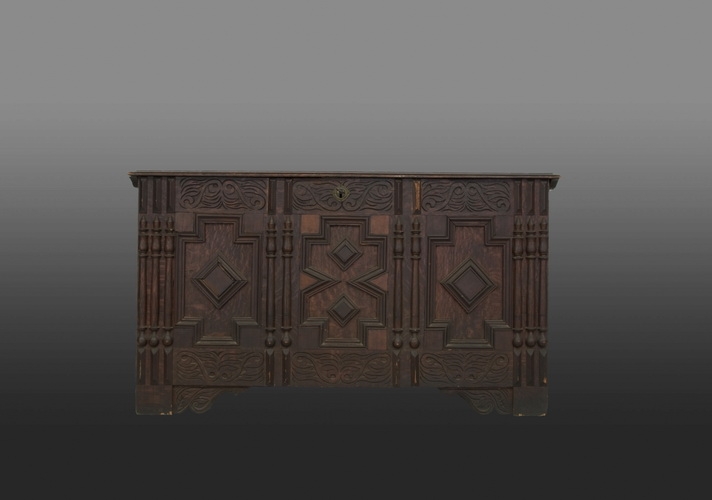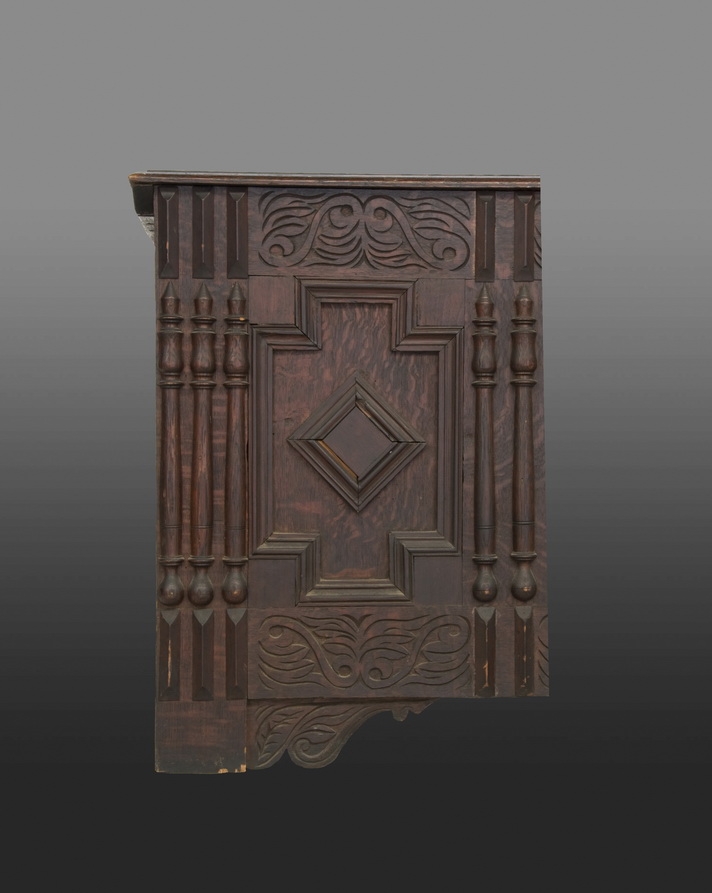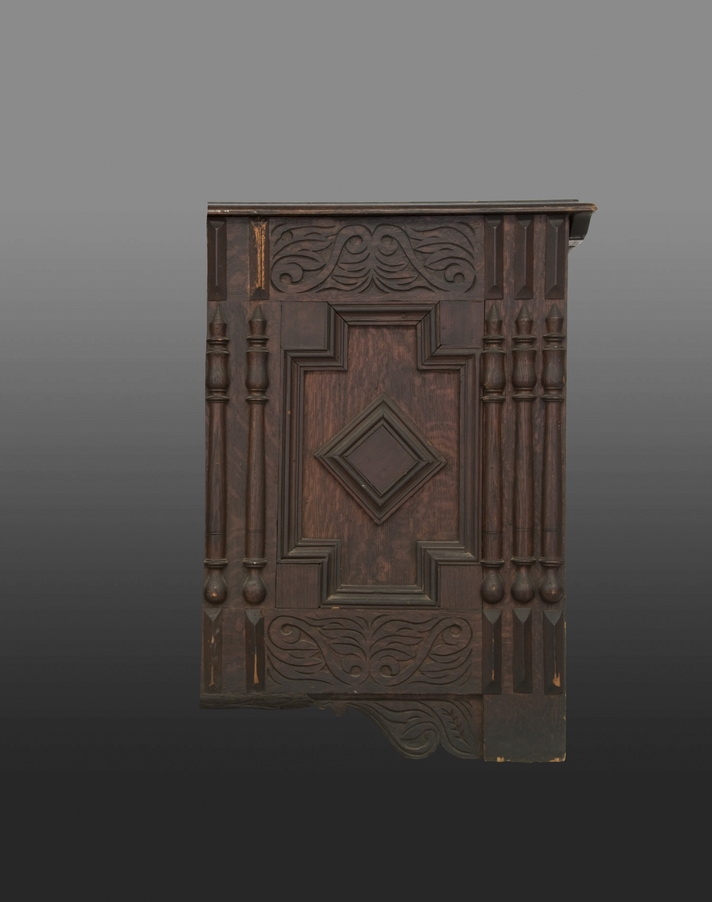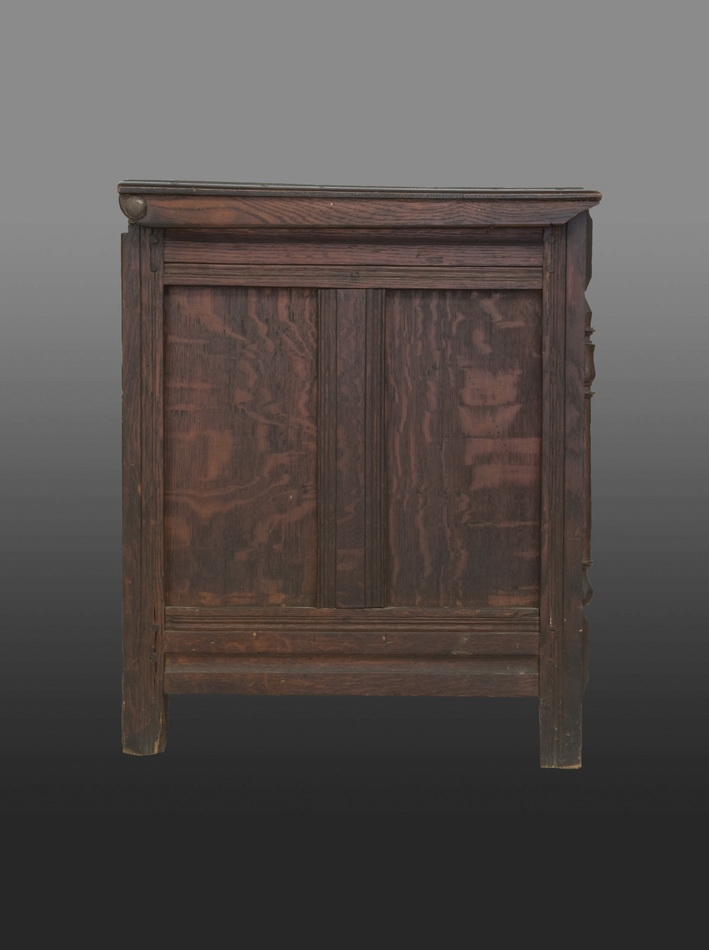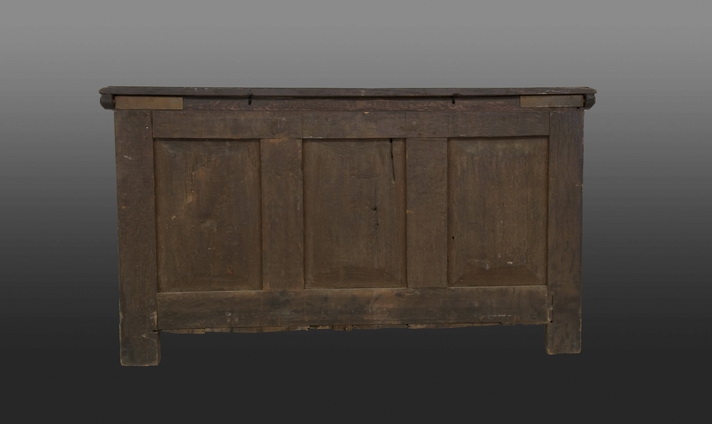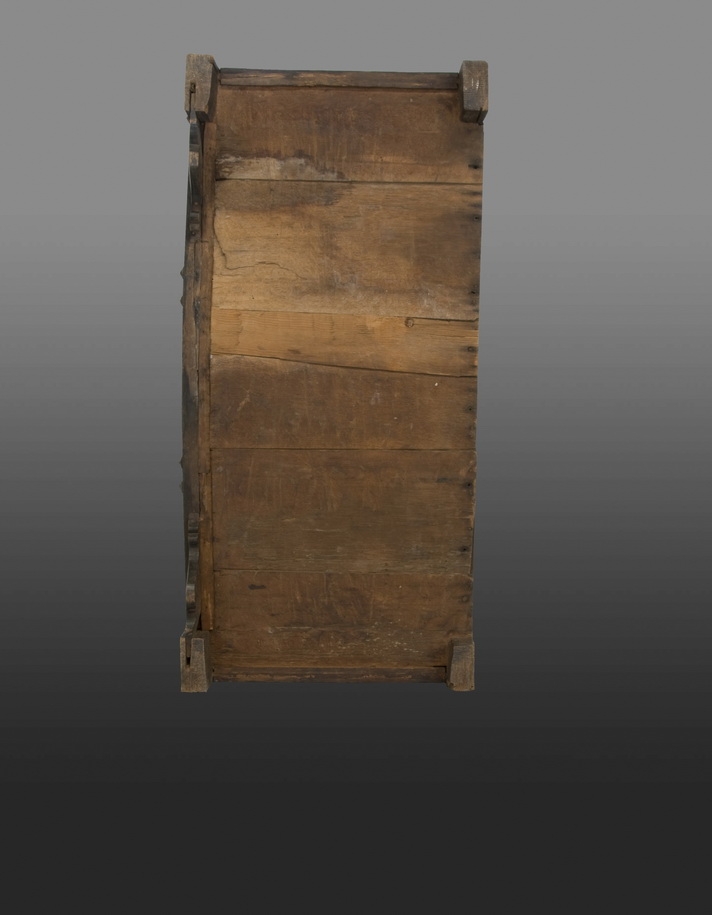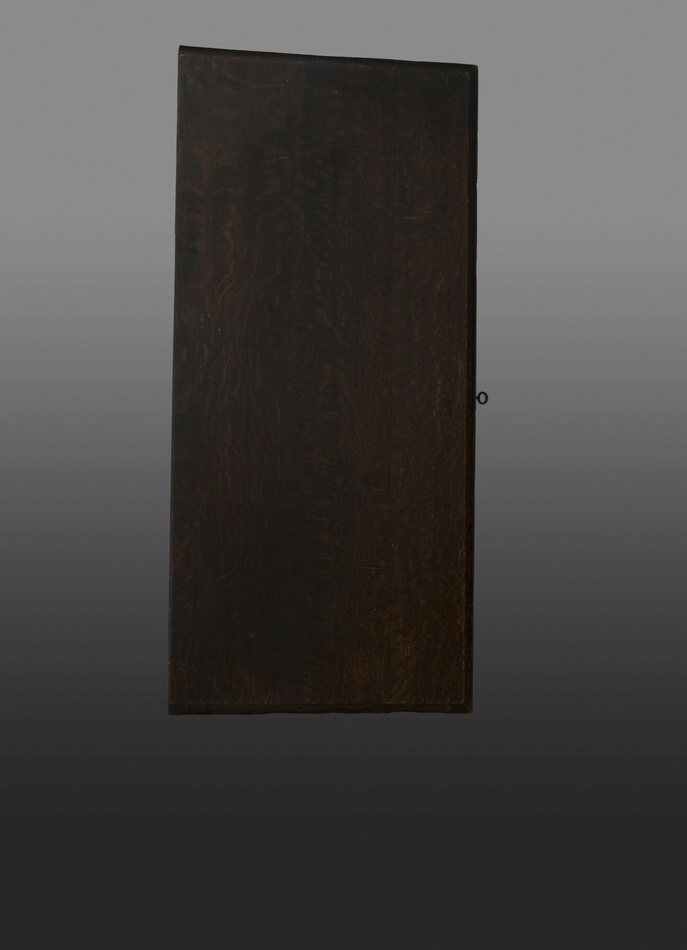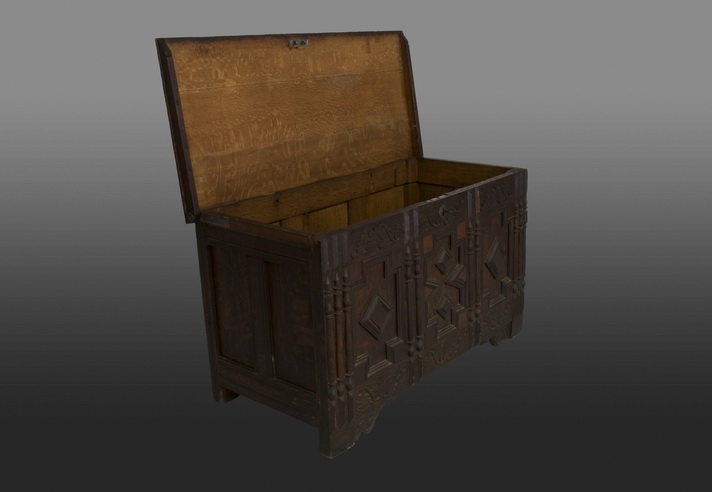Thomas Dennis Jr oak chest
17th century
Ipswich, Massachusetts
W 47" × H 26.25" × D 21.5"
Stock # D1
SOLD
This chest represents the work of the Dennis Shop after it was sufficiently well established in New England to begin experimenting with design. It exhibits the full complement of traits which together comprise the Dennis Shop unique approach to the design and construction of joined case furniture “ the fingerprint of Thomas Dennis. Assembly of the carcass is accomplished with mortise and tenon joints of two different sizes (1/2 and 5/16). Ogee-bracket shaped spandrels of a distinctive profile are affixed to the inner edges of the front stiles with loose tenons and further secured to the edge of the bottom rail with nails driven from below. Similar ogee-bracket shapes are cut at the tips of the tapered cleats which are secured to the lid with heavy pins driven from above. Opening the two-board riven oak lid reveals an interior which once contained a till with a slanted top “ a subtle but highly recognisable Dennis Shop practice. The outermost bottom boards are inserted in small grooves or notches cut in the inner edges of the back stiles at the level of the lower back rail, a feature known on no other seventeenth-century New England joined chests but those made by members of the Dennis Shop. Courses of V-V-ogee moulding employed on so many examples of Exeter and all Dennis Shop joinery appear on the side profiles of the stiles and the side rails of this chest. Passages of adorst foliated s-scrolls are carved on the front rails. This is the exact version of the Exeter/Dennis Shop s-scroll that appears on the seat rails of one of the two great chairs which descended in the Dennis family (Essex Institute) and the on the front rails of cats. 13-15. Arrangements of two asymmetric leaves linked by scrolls fill the faces of the spandrels of this chest and are nearly the same as the pattern carved on the spandrels of the chest constructed by Thomas Dennis for Ipswich, Massachusetts residents John and Margaret Stanifird and dated 1676 (Winterthur Museum). The carving, however, is of a somewhat simplified character (lacking the three-dimensional modelling associated with Thomas Dennis work). An artisans mistake appears on the extreme proper-left passage of adorst s-scrolls on the top rail in which the carver struck the circular cut defining ones-scroll in the wrong place. This and minor differences in the tools used to construct this chest indicate that is most likely the work of an apprentice of Thomas Dennis, probably one of his two sons. There is further evidence to support this conclusion. Mitred mouldings and plaques applied to the front panels and turned half-columns once attached to the front muntins are not known in Thomas Dennis body of surviving work nor on cognate Exeter joinery. This mid seventeenth-century London-derived approach to furniture ornament was employed by contemporary New England joiners shops working in the nearby communities in Boston and Salem, among others. Its use on this chest likely represents an innovation by a second generation member of the Dennis Shop in response to local demand. A chest which descended directly from, and was likely made by, Thomas Dennis Jr. (1671-1703) is also ornamented with applied mitered mouldings and plaques of the same style in conjunction with sequences of Exeter/Dennis Shop adorst s-scrolls (Bowdoin College Museum of Art). The chest discussed here was also likely made by Thomas Dennis Jr.
Condition Notes
Till lost; applied spindles and some mouldings replaced; later hinge mechanism installed; lock replaced; reduced in height.
